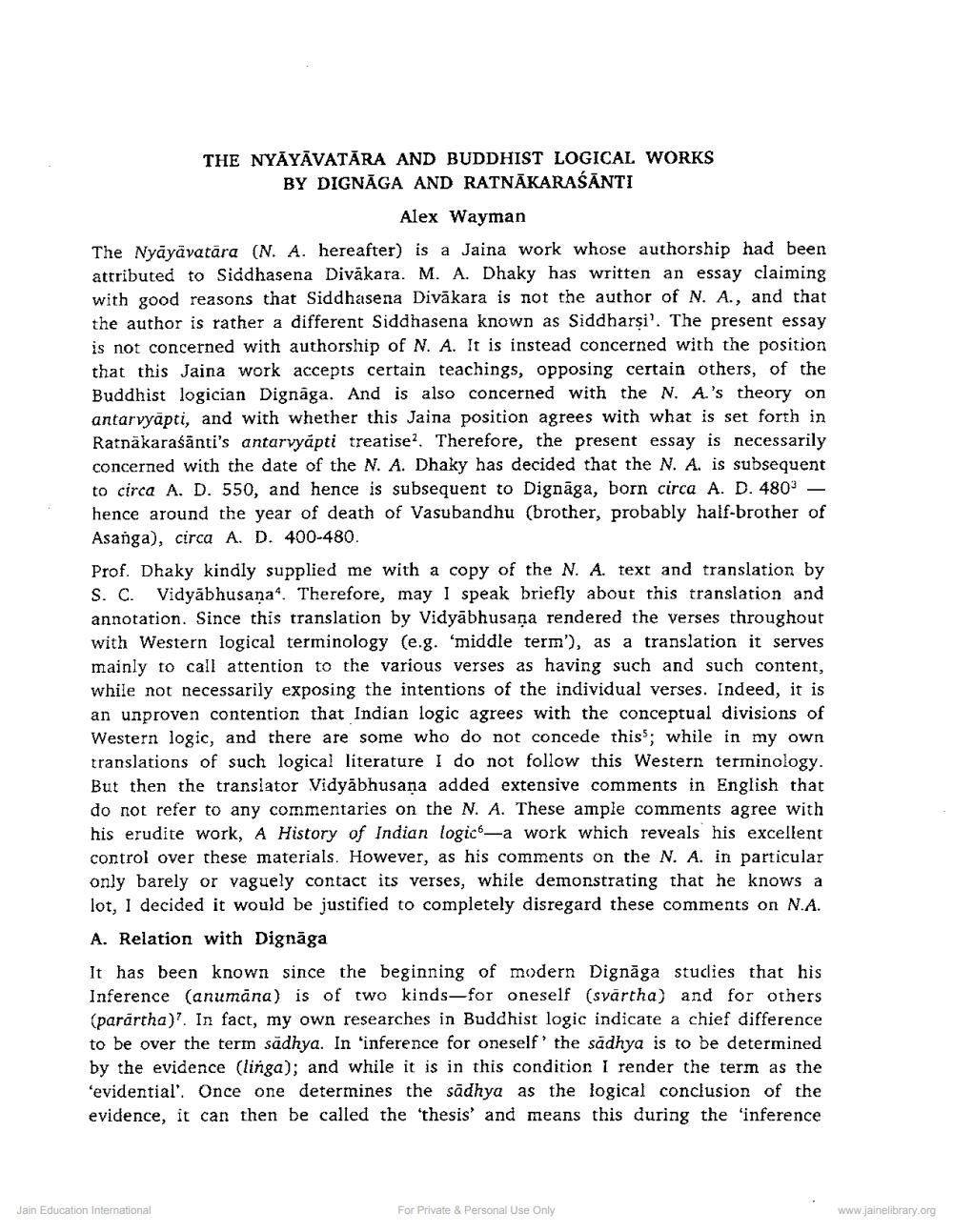Book Title: Nyayavatara and Buddhist Logical Works Author(s): Alex Wayman Publisher: Z_Nirgrantha_1_022701.pdf and Nirgrantha_2_022702.pdf and Nirgrantha_3_022703.pdf View full book textPage 1
________________ THE NYÁYĀVATĀRA AND BUDDHIST LOGICAL WORKS BY DIGNĀGA AND RATNĀKARAŚĀNTI Alex Wayman The Nyāyävatara (N. A. hereafter) is a Jaina work whose authorship had been attributed to Siddhasena Diväkara. M. A. Dhaky has written an essay claiming with good reasons that Siddhasena Divākara is not the author of N. A., and that the author is rather a different Siddhasena known as Siddharşi'. The present essay is not concerned with authorship of N. A. It is instead concerned with the position that this Jaina work accepts certain teachings, opposing certain others, of the Buddhist logician Dignāga. And is also concerned with the N. A.'s theory on antarvyāpti, and with whether this Jaina position agrees with what is set forth in Ratnākaraśānti's antarvyåpti treatise? Therefore, the present essay is necessarily concerned with the date of the N. A. Dhaky has decided that the N. A. is subsequent to circa A. D. 550, and hence is subsequent to Dignāga, born circa A. D. 4803 – hence around the year of death of Vasubandhu (brother, probably half-brother of Asanga), circa A. D. 400-480. Prof. Dhaky kindly supplied me with a copy of the N. A. text and translation by S. C. Vidyābhusana. Therefore, may I speak briefly about this translation and annotation. Since this translation by Vidyābhusaņa rendered the verses throughout with Western logical terminology (e.g. 'middle term'), as a translation it serves mainly to call attention to the various verses as having such and such content, while not necessarily exposing the intentions of the individual verses. Indeed, it is an unproven contention that Indian logic agrees with the conceptual divisions of Western logic, and there are some who do not concede thiss; while in my own translations of such logical literature I do not follow this Western terminology. But then the translator Vidyābhusana added extensive comments in English that do not refer to any commentaries on the N. A. These ample comments agree with his erudite work, A History of Indian logic -a work which reveals his excellent control over these materials. However, as his comments on the N. A. in particular only barely or vaguely contact its verses, while demonstrating that he knows a lot, I decided it would be justified to completely disregard these comments on N.A. A. Relation with Dignāga It has been known since the beginning of modern Dignāga studies that his Inference (anumana) is of two kinds—for oneself (svartha) and for others (parărtha)? In fact, my own researches in Buddhist logic indicate a chief difference to be over the term sädhya. In 'inference for oneself' the sadhya is to be determined by the evidence (linga); and while it is in this condition I render the term as the 'evidential'. Once one determines the sādhya as the logical conclusion of the evidence, it can then be called the thesis and means this during the 'inference Jain Education International For Private & Personal Use Only www.jainelibrary.orgPage Navigation
1 2 3 4 5 6 7 8
